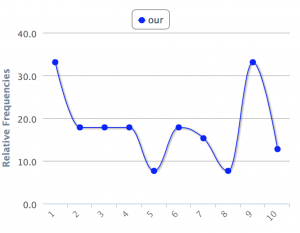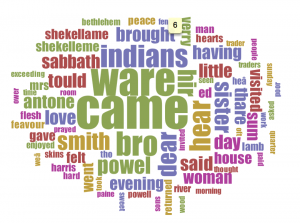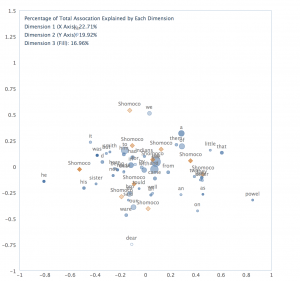While at first it may be difficult to grasp the concept of distant reading, as it can appear confusing or meaningless, it is a very useful tool for analyzing works of literature from a far. Distant reading can help to evaluate the trend of individual words, as seen on Ngram, or compare readings by determining word frequency in each reading.

Using distant readings is useful, as it allows us to learn about many readings in a short amount of time, instead having to read a vast number of texts. Using distant reading proves to be a very useful and powerful took for studying literature, as it can cut down on time and draw connections between different works. Edward Whitley wrote a piece on distant reading, describing the benefits and set backs of this type of research tool. Whitley claims that distant readings, or visualizations “help us to perceive patterns in data that we might otherwise miss” if we were to only do a close reading, these patterns would most likely be unrecognizable. In a number of cases, distant readings are used to supplement close readings, and instead of “parsing out individual words or phrases,” scholars use the digital technology to find and evaluate patterns and outlines. Whitley also makes the point that these distant readings are not the final piece of evidence in ones research, but are a form of data to “spark inquiry” and are simply a “component in a larger interpretative process.” Although there are many benefits to distant reading, there are however draw backs as well.

Whitley states in his essay that many scholars of literature disapprove of visualization tools, stating that because there is so much online text available, it “overwhelms the traditional reading methods of inspection, sift and synthesis.” At times, distant reading can in fact appear overwhelming, however it is definitely a useful tool for literary analysis. An example of this is the Powell Diary. When pasted into word cloud, one can view the frequency and connections of words to one another, and can therefore interpret the significance of each word present.
